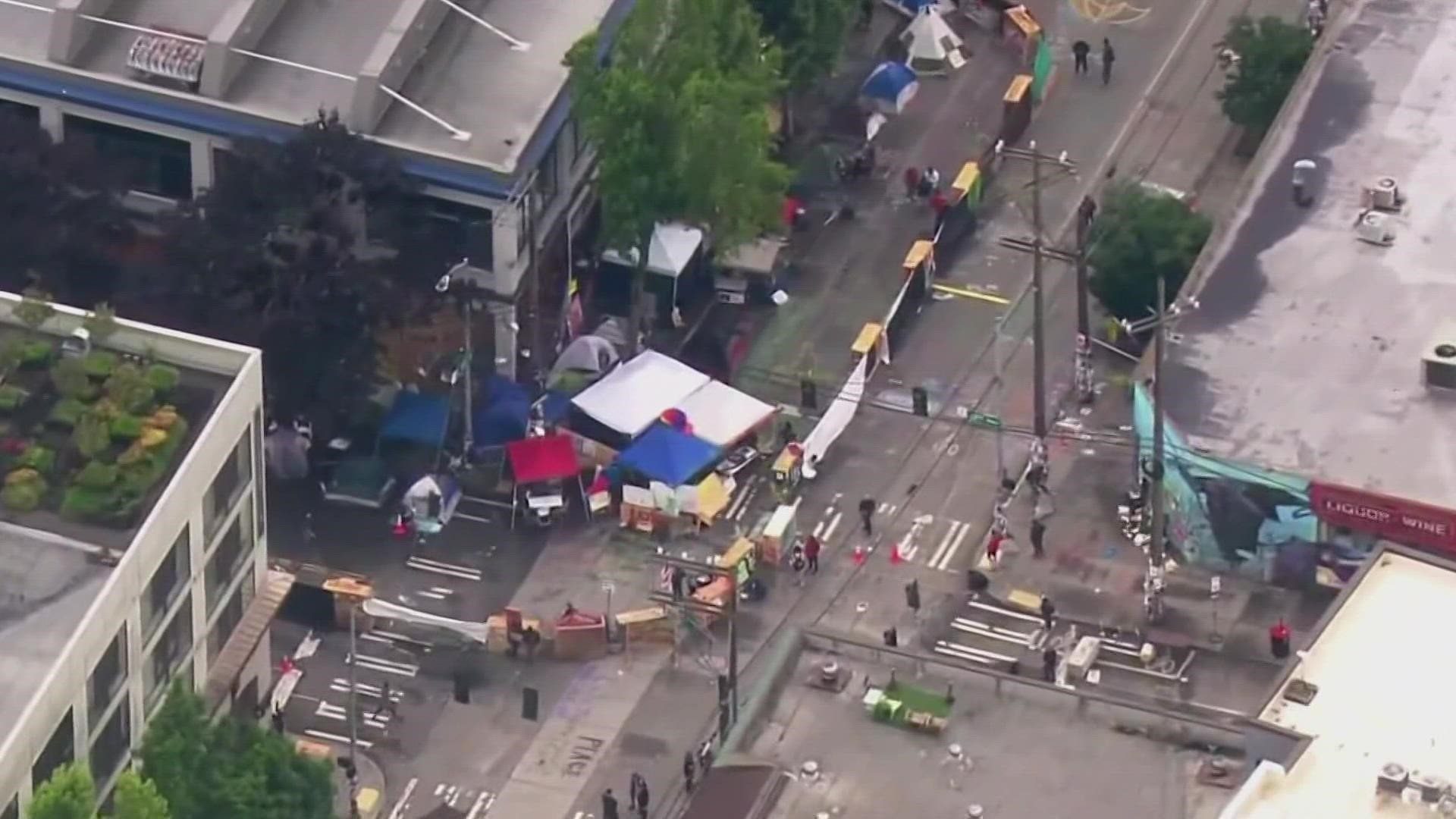SEATTLE — A police oversight committee found that former Seattle Police Chief Carmen Best and one of her assistant chiefs did not violate law or policy when officers withdrew from the East Precinct during protests in June 2020.
The investigation, which the Seattle Office of Police Accountability released Monday, found evacuating the precinct was “a reasonable decision” based on the information available to protect the safety of both protesters and police officers.
“Evidence indicates that the chief and assistant chief made the best decisions they could under high-stress, unprecedented circumstances,” OPA Director Andrew Myerberg said in a statement.
Officers withdrew from the precinct in the Capitol Hill neighborhood amid nightly protests after the killing of George Floyd. For over a week, Seattle police blocked street access around the precinct with fence barricades. However, protesters dismantled the barricades, and Seattle Mayor Jenny Durkan directed that the barricades be removed on June 8.
OPA’s investigation found Best delegated the specifics of maintaining East Precinct operations to her assistant chief, who ordered police to evacuate the facility after consulting with other commanders.
The move led to complaints to OPA that Best failed to take responsibility for her command and that the evacuation led to the establishment of the Capitol Hill Organized Protest (CHOP), which has been criticized for criminal activity. The zone experienced four shootings in 10 days, including two shootings that killed two teens.
However, OPA said it didn’t find any consensus among Seattle police command or the mayor’s office that reopening the streets around the precinct or evacuating it would result in CHOP.
“To find otherwise would be to engage in hindsight analysis divorced from the immense pressures and time constraints that the Assistant Chief faced at the time,” Myerberg said. “No one can definitively say that any alternative strategy—even if one were feasible—would have produced better results.”
OPA recommended that, moving forward, Seattle police should communicate certain details of public interest in a more timely and transparent manner. In the case of withdrawing from the precinct, Myerberg said that the public was forced to speculate about what happened, which led to distrust.
In a statement, Seattle police said the department continues to learn from the protests in 2020 and said it has adopted new tactics since the investigation began. Some of those changes include reducing visible police presence at crowd events, emphasizing de-escalation, providing consistency in warnings around less-lethal tools and emphasizing on tactics that isolate and arrest law violators in peaceful assemblies.
"The turmoil outside the East Precinct during the summer of 2020 presented the SPD with opportunities to learn and improve," the department said in a statement. "The Department’s revisions since then incorporate recommendations made by members of the community and our accountability partners, including the Office of Police Accountability, Office of the Inspector General and the Community Police Commission. The Seattle Police Department appreciates these valuable partnerships and acknowledges the future of public safety is something we need to create together."

